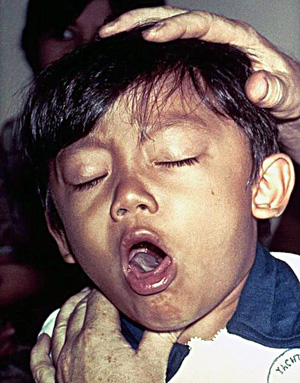At what age did you know that when someone is choking, it is very wrong and dangerous to ‘box’ their back as a way of giving them first aid? Do you know that everyone suffers from aspiration at any one time but children especially those with feeding difficulties are most vulnerable?
It was a Saturday afternoon and we had been given the reward of going out to play since we had done all our school homework diligently. Nakimera one of my playmates in our village was the host that day. We played all sorts of games including ‘kakebe’, dodge ball, round game and had succeeded to get ourselves as dirty as possible. And much as we played, so did the hunger pangs dig deep; so when ‘maama Nakimera’ (maama is a term we use to refer to someone’s mother) called us to share a meal, we did not even think twice. The ten of us all run to the papyrus mat to make sure we get a seat on the ‘table.’ In no time, a bright yellow nicely mashed matooke (bananas) all blowing out steam was served with beef in groundnut paste. No sooner had we began eating than Mukasa started coughing so hard. His eyes blew out of his eye balls rolling with tears, as he gasped for breath. “His choking, his choking!!! We all yelled in chorus. ‘Maama Nakimera’ swung into action jumping everything that was in her way as she aimed for Mukasa’s back. She hit his back so hard and did not stop until the piece of meat fell out and that is when we realized we all had held our breathe for so long and we all let out a huge sigh. What should have been a sad moment became a teasing scene as we long bust out laughing and accusing Mukasa for being hungrier than the rest of us. This that happened to Mukasa is what we call aspiration.
It is something that happens to all of us time and again although it is more common among children that are differently able-d and struggle with feeding difficulties.
Signs of aspiration
- Wet sounding voice
- Runny nose
- Choking
- Coughing
- Difficulty breathing
Coughing and choking during mealtime are often signs that the body is trying to protect the airway from food or liquid. Not at any time should food or liquid be in the airway. It is very dangerous to pat the back of a child chocking, because this may knock food or liquid further into the airway. The recommendation is to make sure the child is upright as you encourage them to keep coughing. If concerns are frequently observed, the child may need to be rushed to a doctor.

The tube for food (esophagus) and the tube for air (trachea/airway) are right next to each other. Safe swallowing depends on perfect timing of each step with effective performance of over 30 muscles and nerves. When the food or liquid enters the wrong tube (airway), aspiration occurs. Signs of aspiration may happen during feeding or right after eating. The signs may depend on the age of the child, how often and how much the child aspirates. Some children who aspirate do not have all the signs, and some do not have any. Something called silent aspiration. Everyone aspirates from time to time, but most people are able to cough to clear the food or liquid out of the airway. Many children with health problems or disabilities may be more at risk for frequent aspiration. If aspiration occurs frequently, in large amounts, or the child is not able to cough sufficiently, it can be very serious and lead to respiratory problems such as pneumonia, dehydration, malnutrition, weight loss and increased risk of illness.
So be ware to watch your child as they feed to trace signs of difficulty and this way further respiratory and nutrition problems can be averted.
